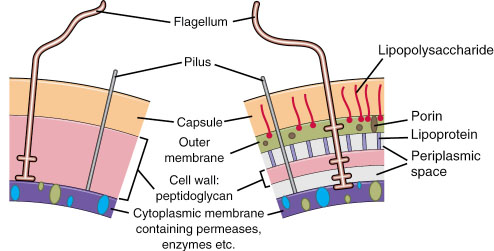* * *
Refers to the ability of a bacterium to resist decolorization with alcohol after being treated with Gram crystal violet stain, imparting a violet color to the bacterium when viewed by light microscopy. This reaction is usually an indication that the outer structure of the bacterium consists of a cytoplasmic membrane surrounded by a thick, rigid bacterial cell wall composed of peptidoglycan. See Gram stain.
* * *
gram-pos·i·tive 'gram-'päz-ət-iv, -'päz-tiv adj holding the purple dye when stained by Gram's stain used chiefly of bacteria
* * *
gram-pos·i·tive (gram-pozґĭ-tiv) retaining the stain or resisting decolorization by alcohol in the Gram method of staining, a primary characteristic of bacteria whose cell wall is composed of a thick layer of peptidoglycan with attached teichoic acids. Cf. gram-negative.
 Characteristic cell wall structures of gram-positive (left) and gram-negative (right) bacteria.
Characteristic cell wall structures of gram-positive (left) and gram-negative (right) bacteria.
Medical dictionary. 2011.